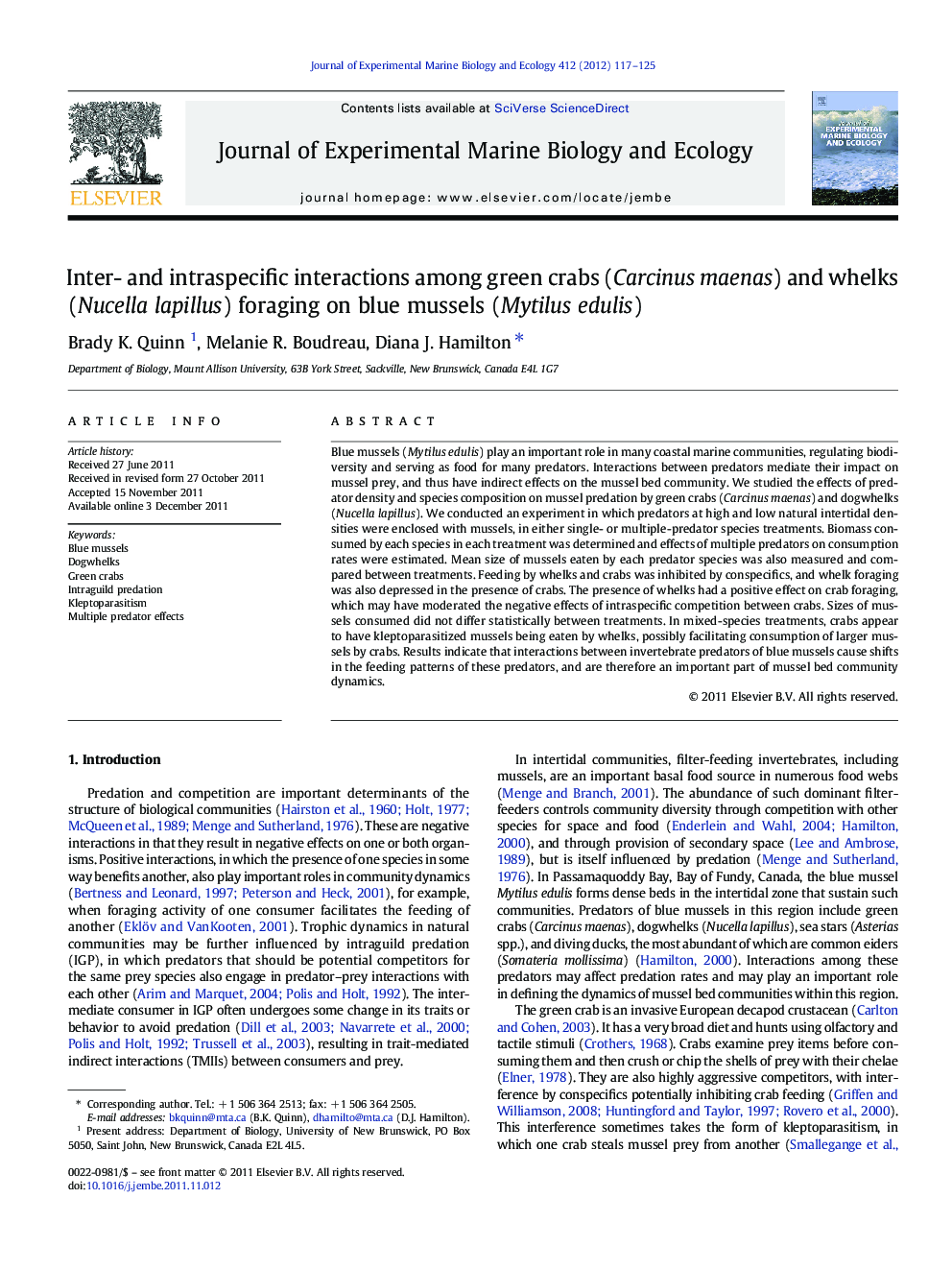| Article ID | Journal | Published Year | Pages | File Type |
|---|---|---|---|---|
| 4396060 | Journal of Experimental Marine Biology and Ecology | 2012 | 9 Pages |
Blue mussels (Mytilus edulis) play an important role in many coastal marine communities, regulating biodiversity and serving as food for many predators. Interactions between predators mediate their impact on mussel prey, and thus have indirect effects on the mussel bed community. We studied the effects of predator density and species composition on mussel predation by green crabs (Carcinus maenas) and dogwhelks (Nucella lapillus). We conducted an experiment in which predators at high and low natural intertidal densities were enclosed with mussels, in either single- or multiple-predator species treatments. Biomass consumed by each species in each treatment was determined and effects of multiple predators on consumption rates were estimated. Mean size of mussels eaten by each predator species was also measured and compared between treatments. Feeding by whelks and crabs was inhibited by conspecifics, and whelk foraging was also depressed in the presence of crabs. The presence of whelks had a positive effect on crab foraging, which may have moderated the negative effects of intraspecific competition between crabs. Sizes of mussels consumed did not differ statistically between treatments. In mixed-species treatments, crabs appear to have kleptoparasitized mussels being eaten by whelks, possibly facilitating consumption of larger mussels by crabs. Results indicate that interactions between invertebrate predators of blue mussels cause shifts in the feeding patterns of these predators, and are therefore an important part of mussel bed community dynamics.
► We examined inter- and intraspecific interactions between predators of blue mussels. ► Green crabs inhibit whelk predation, but whelks facilitate crab predation. ► Crabs kleptoparasitize whelks, possibly facilitating consumption of larger mussels. ► The extent of interspecific feeding inhibition is density-dependent. ► Intraspecific feeding inhibition is present in both green crabs and whelks.
